The Great Migration
The Great Migration is one of the most extraordinary natural spectacles on Earth. Every year, millions of wildebeests, zebras, and gazelles embark on a perilous journey across the vast plains of East Africa in search of fresh grazing land. This incredible event takes place in the Maasai Mara National Reserve in Kenya and the Serengeti National Park in Tanzania, creating a dynamic and breathtaking display of wildlife in motion. The Great Migration is not just a journey; it is a life-and-death struggle that highlights the resilience and raw power of nature.

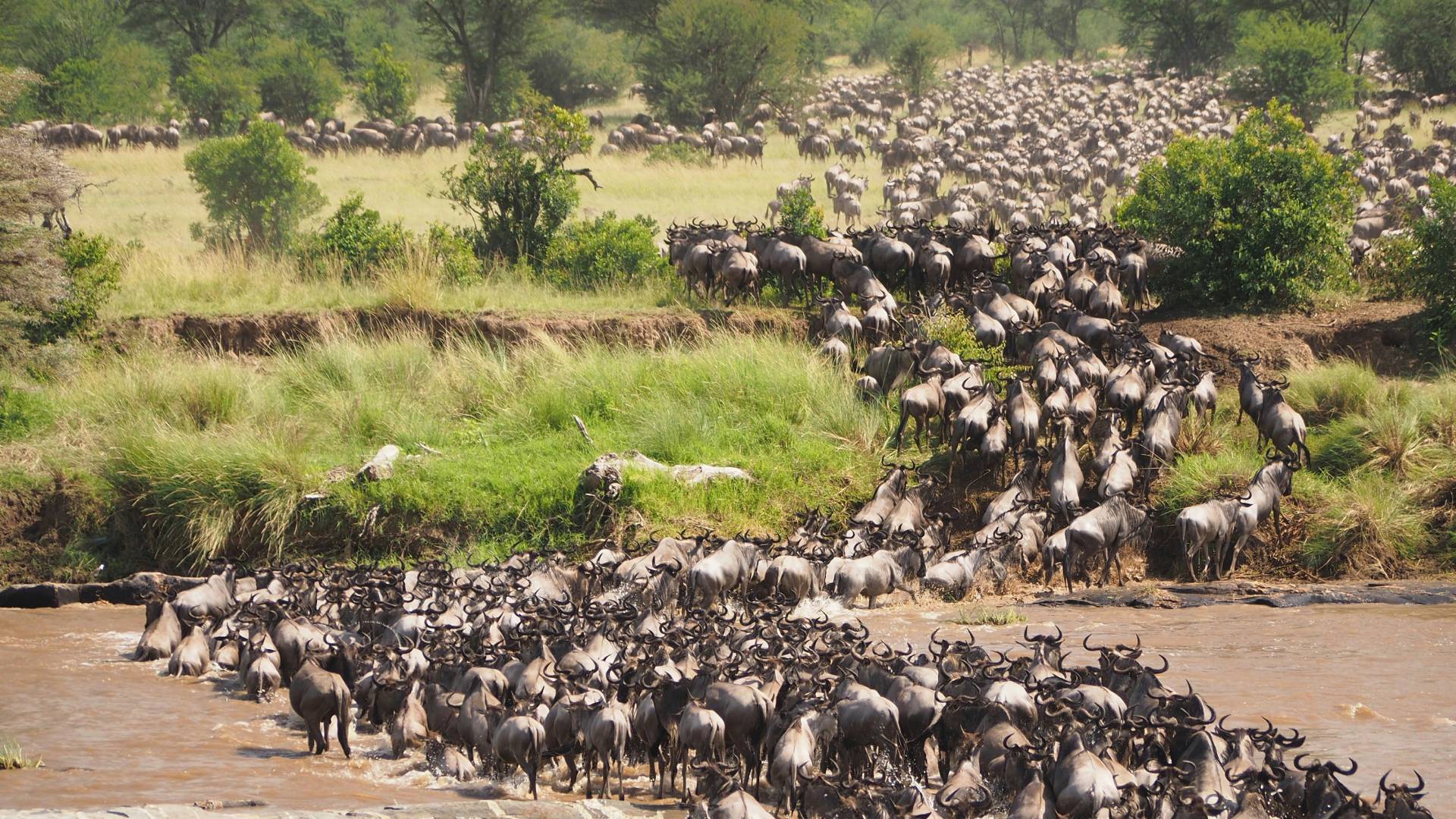
A Phenomenon of Epic Proportions
The Cycle of Life
The Great Migration is an annual event driven by the changing seasons and the search for sustenance. It begins in the southern Serengeti, where, between January and March, nearly half a million wildebeest calves are born. The lush grasses of the Serengeti provide ample food for these newborns, and the plains become a nursery for the next generation. However, as the dry season approaches, the herds must move in search of greener pastures, triggering the start of the migration.
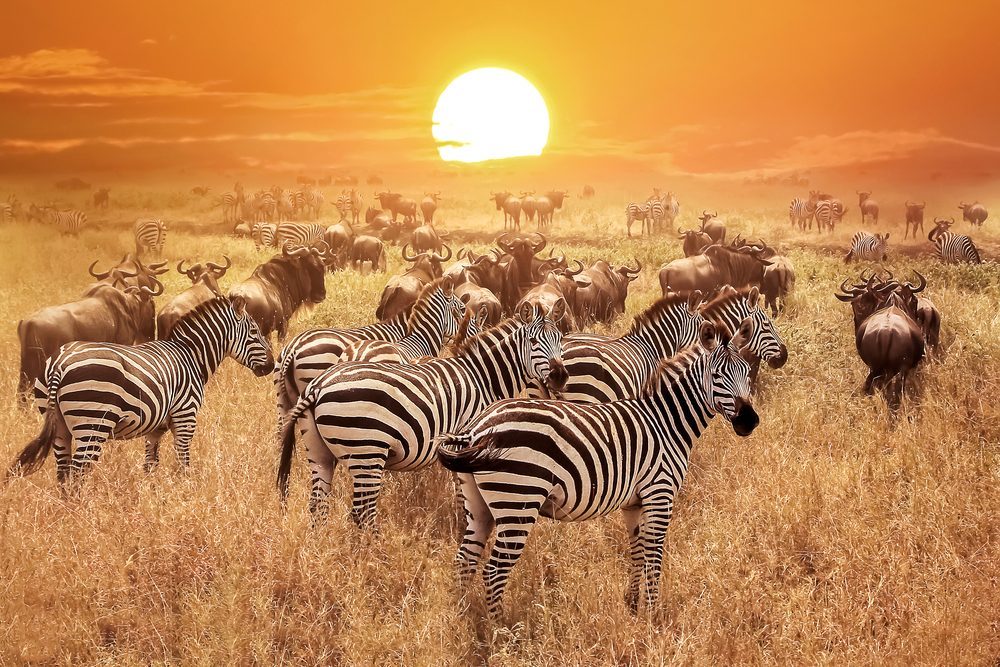

The Journey Northward
As the rains cease in the Serengeti, the herds begin their northward journey toward the Maasai Mara. This trek is fraught with danger as the animals must cross rivers teeming with crocodiles, navigate through predator-infested territories, and endure the harsh realities of the African wilderness. The Mara River, in particular, is a significant obstacle; it is here that many animals lose their lives, either to the river’s swift currents or to the jaws of waiting crocodiles. The crossing of the Mara River is one of the most dramatic moments of the Great Migration, drawing nature enthusiasts and photographers from around the world.
The Arrival in the Maasai Mara
By July, the herds begin to arrive in the Maasai Mara, where they find the lush grasslands they have been searching for. The Maasai Mara, with its open savannahs and abundance of food, provides a temporary refuge for the migrating animals. However, the dangers are far from over. The Maasai Mara is home to some of the highest concentrations of predators in Africa, including lions, cheetahs, and hyenas. The presence of these predators ensures that the drama of the Great Migration continues, as every day becomes a battle for survival.
The Predators’ Paradise
Lions: The Kings of the Mara
The Great Migration is a feast for the predators of the Maasai Mara, particularly the lions. Known as the “Kings of the Mara,” lions take full advantage of the abundance of prey. The large prides of lions that inhabit the Maasai Mara are often seen stalking the migrating herds, waiting for the perfect moment to strike. The migration provides a unique opportunity for these apex predators to secure their food supply for months to come.
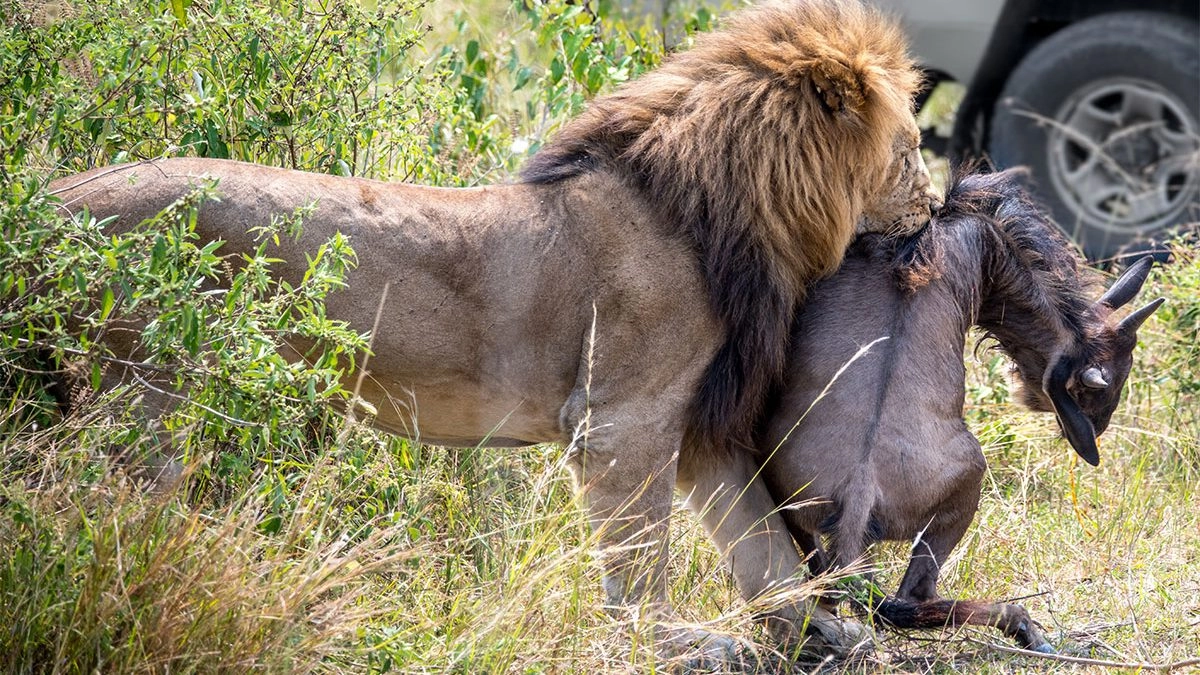

Cheetahs: The Speedsters of the Savannah
Cheetahs, the fastest land animal on Earth, also benefit greatly from the Great Migration. The open plains of the Maasai Mara are ideal hunting grounds for these agile predators. Cheetahs rely on their incredible speed to chase down and capture prey, often singling out young or weak individuals from the herds. The abundance of prey during the migration season allows cheetahs to thrive, ensuring the survival of their cubs in an environment where every meal is critical.
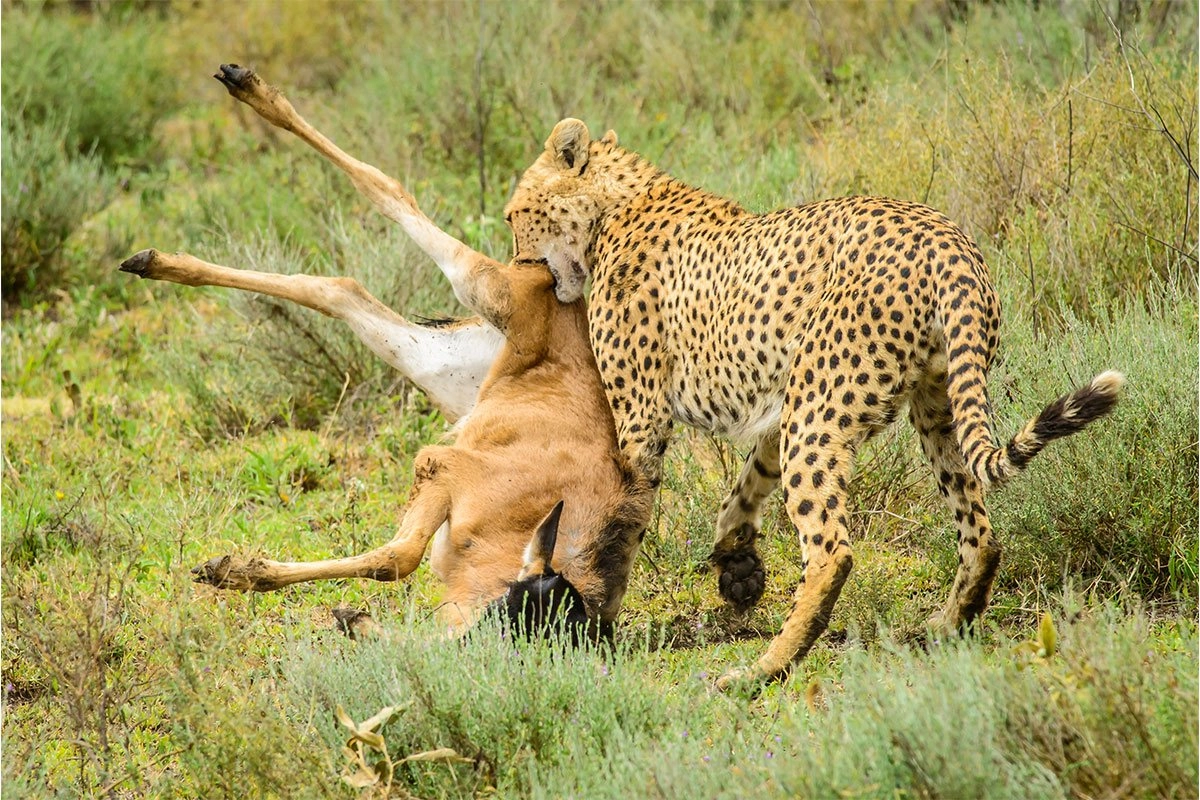

Hyenas and Other Scavengers
Hyenas, often misunderstood as mere scavengers, are actually skilled hunters in their own right. During the Great Migration, hyenas form large clans that can overpower prey much larger than themselves. Their powerful jaws and keen sense of smell make them formidable predators, and they often engage in intense battles with other carnivores for food. The migration also attracts a variety of other scavengers, including vultures and jackals, all of which play a crucial role in the ecosystem by cleaning up the remains left by the larger predators.
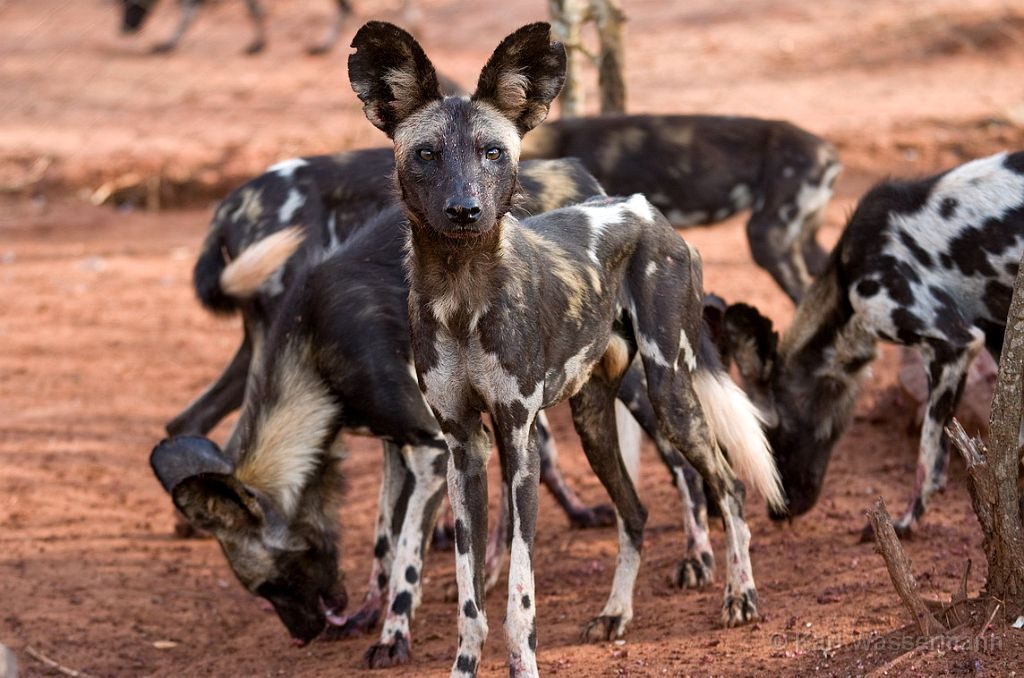

The Serengeti: A Vast Wilderness
The Southern Serengeti: Birthplace of the Migration
The southern Serengeti is where the Great Migration begins each year, as the calving season brings new life to the plains. Between January and March, the vast grasslands become dotted with hundreds of thousands of wildebeest calves. The Serengeti’s nutrient-rich grasses provide the perfect environment for the young wildebeests to grow quickly, building the strength they will need for the journey ahead. The calving season is also a time of abundance for predators, who take advantage of the vulnerable newborns.
The Western Corridor and the Grumeti River
As the dry season progresses, the herds begin to move westward into the Serengeti’s Western Corridor. Here, they encounter the Grumeti River, another perilous obstacle on their journey. Much like the Mara River, the Grumeti is home to large Nile crocodiles, which lie in wait for the migrating animals. The crossing of the Grumeti River is another dramatic moment in the migration, as the herds must once again face the dangers of the water and the predators lurking within.
The Northern Serengeti: A Transitional Zone
The northern Serengeti, where the park borders Kenya’s Maasai Mara, is the final stage of the migration within Tanzania. This region is characterized by rolling hills and woodlands, providing a diverse landscape for the migrating animals. By the time the herds reach the northern Serengeti, they have traveled hundreds of miles and faced countless dangers. The northern Serengeti serves as a transitional zone before the herds cross into the Maasai Mara, where the next chapter of their journey unfolds.
The Impact of the Great Migration
A Critical Ecological Event
The Great Migration is not only a spectacular sight for visitors but also a critical ecological event. The movement of millions of herbivores across the plains plays a vital role in maintaining the health and balance of the ecosystem. As the herds graze on the grasses, they help to stimulate new growth, ensuring that the plains remain fertile. Additionally, the migration supports a wide variety of predators and scavengers, whose survival depends on the availability of prey.
Tourism and Conservation
The Great Migration is a major draw for tourists, bringing thousands of visitors to Kenya and Tanzania each year. The revenue generated from tourism is essential for the conservation of the Maasai Mara and Serengeti ecosystems. Both governments and local communities rely on these funds to protect wildlife, combat poaching, and support sustainable tourism initiatives. By visiting these parks, tourists contribute directly to the preservation of one of the world’s most important natural events.
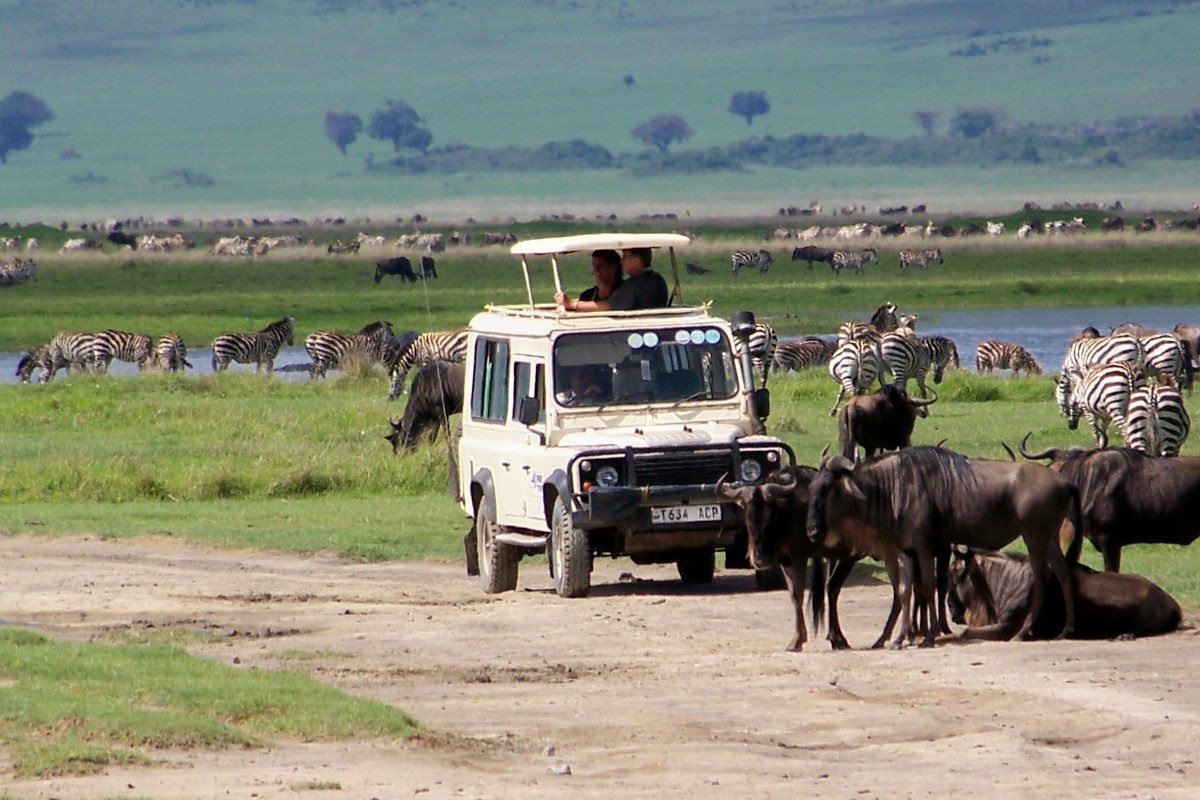

Planning Your Visit to Witness the Migration
Best Times to Visit
Timing is everything when it comes to witnessing the Great Migration. The herds are in the southern Serengeti between January and March, which is the best time to see the calving season. The river crossings at the Grumeti and Mara Rivers typically occur between June and October, with the exact timing varying each year depending on rainfall patterns. For those interested in seeing the dramatic river crossings, late July to early September is generally the best time to visit the Maasai Mara.
Where to Stay
There are numerous options for accommodation in both the Maasai Mara and the Serengeti, ranging from luxury lodges to more budget-friendly tented camps. Staying in a mobile camp that moves with the herds can provide a more immersive experience, allowing you to be close to the action at all times. Many camps and lodges also offer guided safaris with experienced rangers who can provide insights into the migration and ensure you get the best possible viewing opportunities.
What to Pack
When planning a trip to witness the Great Migration, it’s important to pack appropriately. Light, breathable clothing is essential for the warm days, while warmer layers are necessary for the cooler mornings and evenings. A good pair of binoculars is a must for spotting wildlife from a distance, and don’t forget your camera to capture the incredible scenes you’ll witness. Sun protection, including hats and sunscreen, is also crucial, as the African sun can be intense.
Conclusion
The Great Migration is a natural wonder that stands as one of the most awe-inspiring events in the world. It is a story of survival, resilience, and the enduring power of nature. Whether you are drawn to the spectacle of the river crossings, the drama of predator-prey interactions, or the sheer beauty of the African plains, witnessing the Great Migration is an experience that will stay with you forever. By planning your visit to the Maasai Mara and Serengeti National Parks, you have the opportunity to become part of this incredible journey and contribute to the ongoing conservation efforts that ensure the Great Migration continues for generations to come.






Pingback: Combine a Rwanda Gorilla Safari with a Serengeti National Park Safari